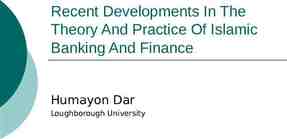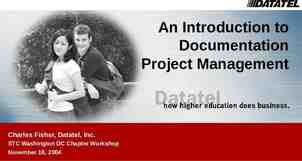Week 12: Procurement Management Learning Objectives You should be
17 Slides105.50 KB

Week 12: Procurement Management Learning Objectives You should be able to: List and describe activities, inputs, outputs, and tools of the 5 procurement management processes Explain the benefits and guidelines for IT outsourcing Describe and contrast the types of contracts Define and describe: SOW, RFQ, RFP List potential mistakes in managing procurement contracts and list guidelines for preventing them

Procurement Processes Procurement planning - what to procure Solicitation planning - identify sources Solicitation - obtain quotes or bids Source selection - choose source(s) Contract administration - with seller Contract close-out - completion, resolution

IT Outsourcing Increasing in importance Contractual relationship with external party who performs one or more IT functions at a pre-determined price according to pre-determined performance criteria Differs from merely contracting out relinquish some level of management control

Outsourcing Benefits Reduce costs Focus on core business seller may gain economies of scale let someone else do non-core business IT operations and/or development Access to advanced skills and technologies Workforce flexibility Increase accountability through a well-written contract

Outsourcing Risks Costs of contract administration Obsolescence of internal IT skills Loss of management control human resources quality control Dependence on single vendor Intellectual property rights

Procurement Management Perspectives Seller: vendor, contractor, supplier, etc. Buyer: customer or client of seller The contract may be a project of the seller, thus requiring Project Management However, procurement management is from buyer’s perspective Guidelines may also apply to internal clients

Procurement Planning Determining what project needs are best met by outside products and/or services Inputs: scope, product description, market conditions constraints/assumptions re: outside sellers Outputs: procurement plan SOW: statement of work

Procurement planning tools Make-or-buy analysis compare cost of providing internally to cost of outsourcing Expertise creative options

Statement of Work Scope: detailed description of work Location: where work to be done Period: start and end dates Deliverables and due dates Standards: industry-specific Acceptance criteria: what will satisfy buyer Special requirements

Contract Types Vary with proportion of risk to buyer, seller Fixed price Cost-reimbursable appropriate for well-defined product or service higher risk to seller payment to seller for direct and indirect costs higher risk to buyer Unit price: when cost estimation difficult time and materials

Contract Variations Incentives to seller Cost plus incentive meeting or exceeding project objectives shared savings or shared extra costs Cost plus fixed fee Cost plus percentage of cost no incentive for reducing costs highest risk to buyer

IT Outsourcing Contracts Specify expectations for experience levels Specify hourly rates for differing experience and education levels Termination clause: terms for ending contract Renewal expectations Flexibility for changing conditions

Solicitation Planning Prospective sellers Request for Proposal (RFP) Request for Quote (RFQ) basic requirements enough information for seller to respond simpler, more specific Invitations to bid or negotiate Key Output: evaluation criteria

Solicitation Send out RFP’s, etc. sellers of previous work, on-going relationship list of qualified sellers conference to clarify specifications competition can reduce price Key Output: Proposals or Responses

Source Selection Systematic evaluation Involve multiple stakeholders: technology, cost, management experts Identify short list May involve contract negotiation According to weighted evaluation criteria clarification and mutual agreement Key Output: Contract legal relationship subject to court remedy

Contract Administration Ensures seller’s performance meets contract May require coordination and integration among multiple contracts, sellers Key inputs: Key tools: change requests, invoices change control system (CCS) payment system Avoid Constructive Change Orders changes that bypass CCS

Contract Close-out Product verification Updating, archiving records Formal acceptance and completion Inputs: contract Tools: audit Outputs: signed completion, contract files






